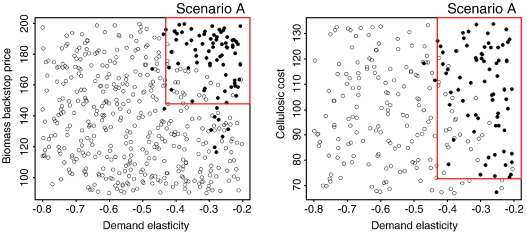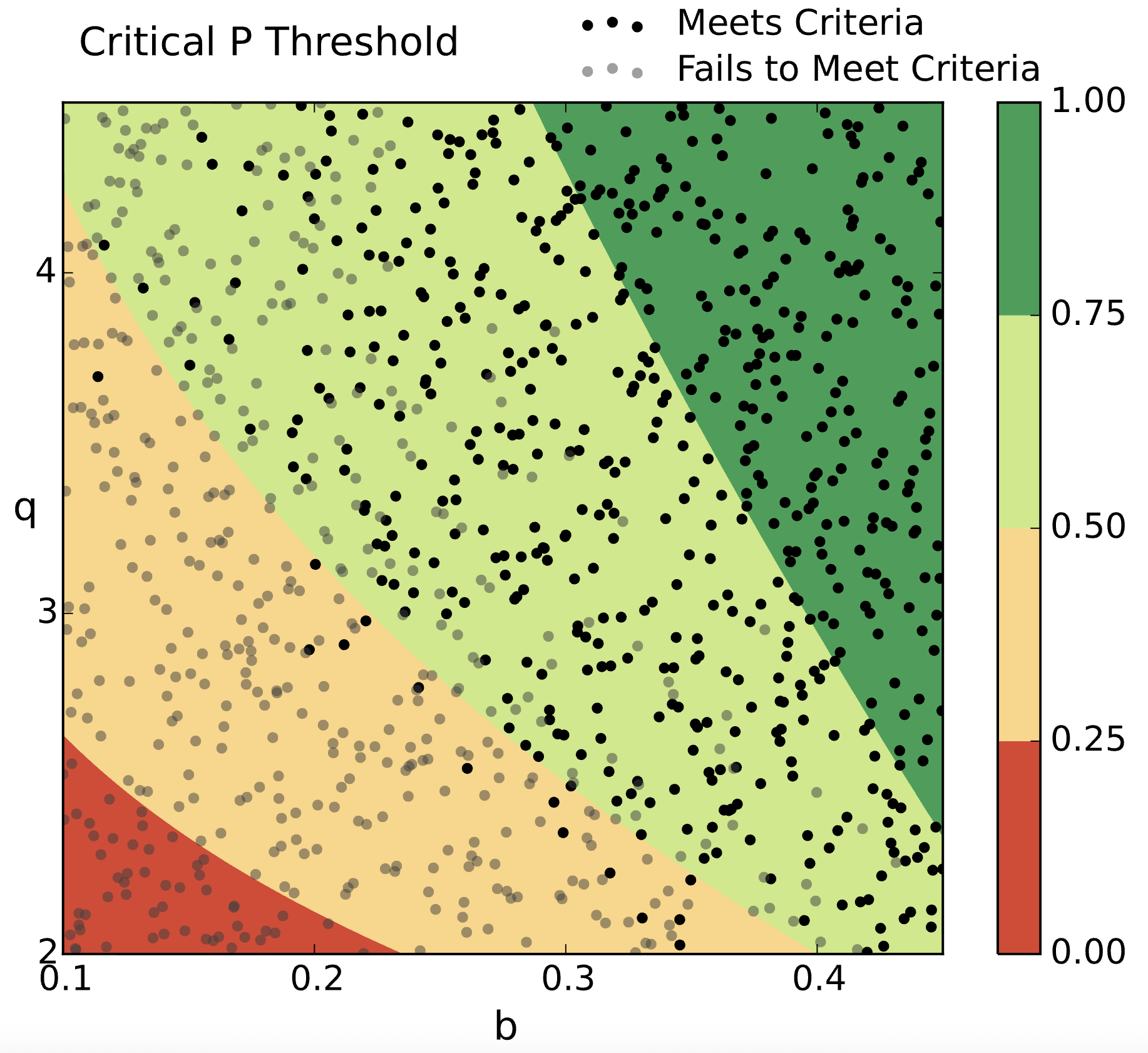Scenario discovery
Lecture 08
October 27, 2025
Computer-assisted scenario development
Why is scenario-based planning so common?
As Bryant and Lempert (2010) write, “Scenarios provide a commonly used and intuitively appealing means to communicate and characterize uncertainty in many decision support applications.” They often:
- “Build a narrative description that captures decision makers’ imaginations”
- “Aim to reduce overconfidence”
- “Encourage… groups to reflect on a broader range of futures”
- “Make it easier for decision makers to consider inconvenient or contentious futures”
Limitations to traditional scenarios
- Often seen as arbitrary or biased
- It is difficult to a priori choose a small number of policy-relevant scenarios to summarize the breadth of uncertainty about the future
- Can work well with small groups of clients who have strong relationships with scenario developers, but can fail to work for wicked problems (e.g., diverse views, many large uncertainties, etc.,)
How scenario discovery addresses traditional scenario limitations
- Defines scenarios as a set of future states of the world that represent vulnerabilities of proposed policies
- Typically, but not necessarily, uses statistical or data-mining algorithms in an effort to find easy-to-interpret, policy-relevant regions in the space of uncertain input parameters to computer simulation models
In more accessible terms: scenario discovery is a method to find, rather than pre-specify, decision-relevant scenarios to plan for. This is particularly relevant for a robust decision-making analysis.
The scenario discovery workflow
The steps
- Generate data
- Find scenarios
- Assess scenarios
- Generate more data?
- Find more scenarios?
- Select scenarios to plan for
Generate data from a simulation model
- Define an experimental design over the uncertain inputs while holding constant a candidate strategy
- Bryant and Lempert (2010) argue for Latin Hypercube sampling, which is common.
- Define a policy-relevant criteria to identify “cases of interest” that meet this threshold or fail
Find scenarios
Often, studies use supervised classification machine learning to identify regions or rules that best differentiate successes and failures. The goals are:
- High coverage (analagous to recall)
- High density (analagous to precision)
- High interpretability (highly subjective!)
Trade-offs in achieving scenario “quality”
Often, coverage, density, and interpretability compete with one another
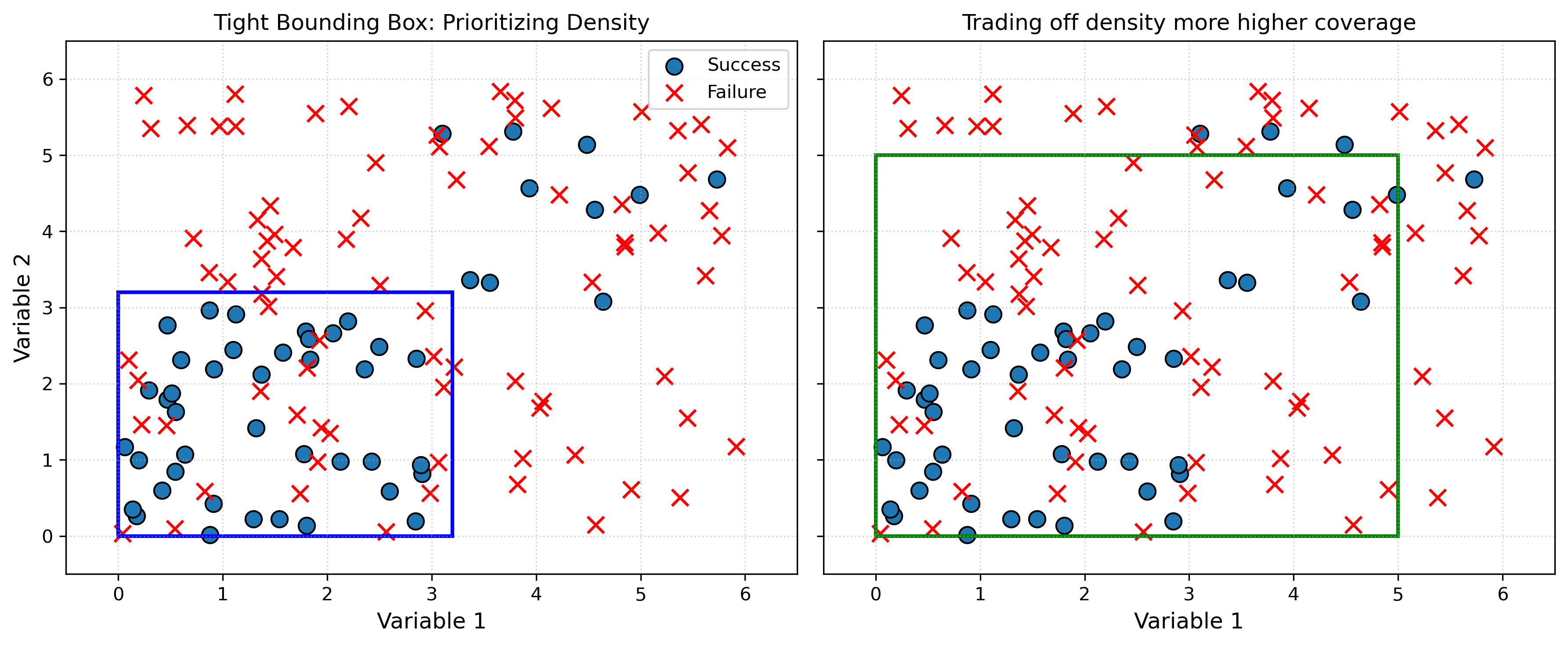
Scenario discovery algorithms
- You often see classification & regression trees (CART) or patient rule induction method (PRIM) - examples to follow
- But, keep your goal in mind a use your imagination!
- No matter what you implement, calculate diagnostics!
Scenario discovery examples
Patient Rule Induction Method
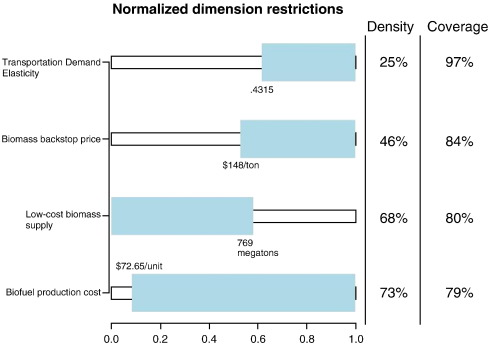
Classification and Regression Trees
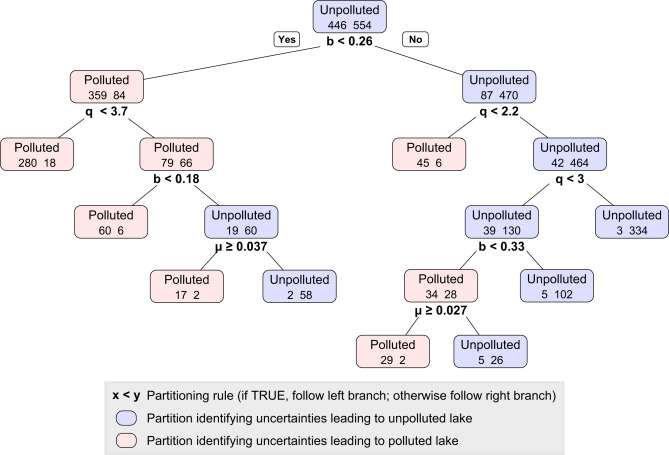
Multi-trait Scenario Storyline Discovery
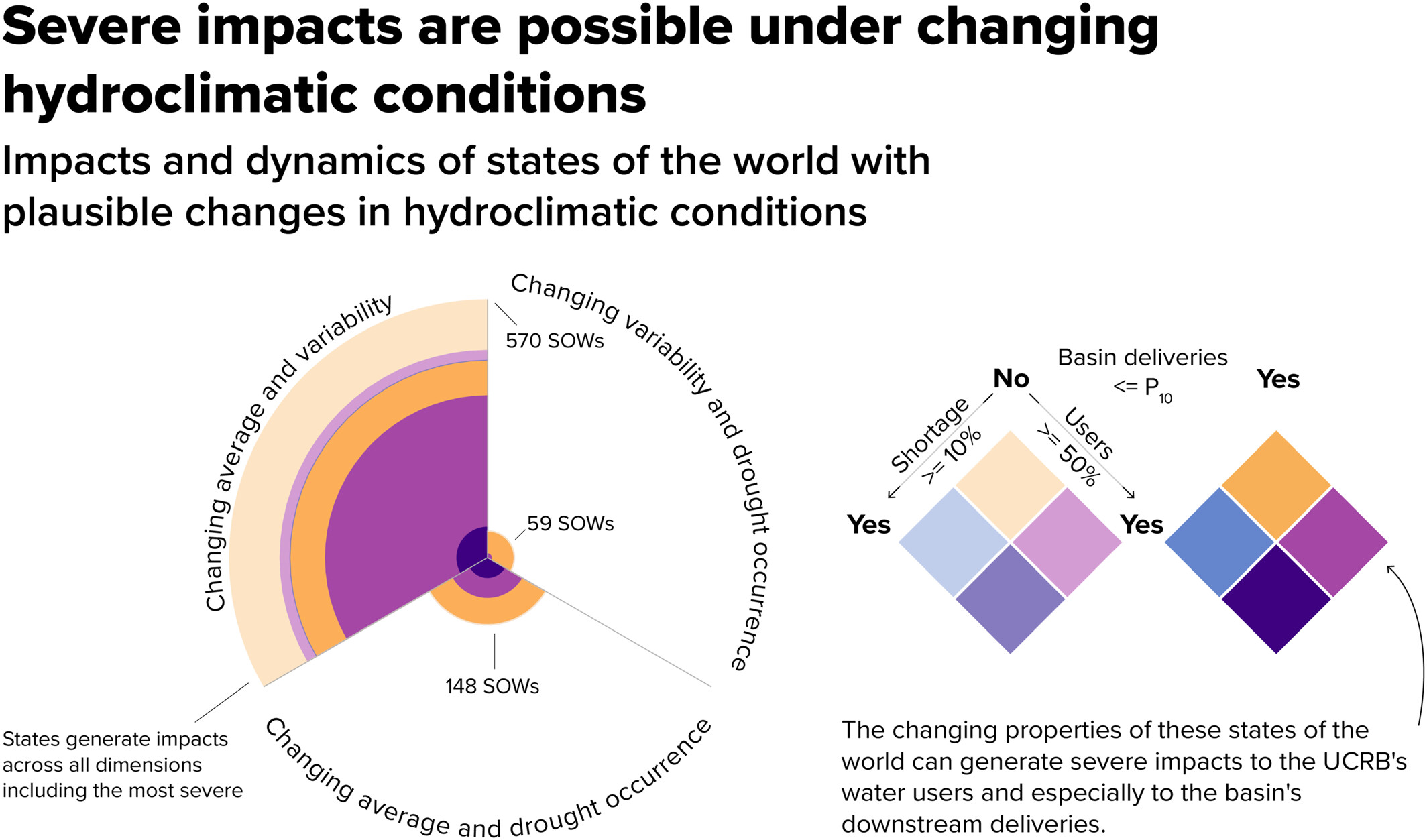
Broader considerations
Scenario discovery was conceived as part of a deliberative, iterative process
- This is one of the best opportunities for learning in the co-production process
- It’s also a great opportunity for producing science insights (even outside of co-production settings!)
- Several optional readings demonstrate this by considering a wide range of ensembles beyond the limited SSP-RCP ones
Don’t let exploratory modeling taking your judgement out of the equation
- Scenario discovery is a process
- Simple visual analysis can inform algorithmic choices, but can also be effective in-and-of itself
Logistics
This week
- Optimization tutorial on Wed. by Prabhat
- Case study on Friday
Next week
- Discussion about revisiting decision analysis framing
- Practice presentations Wed. & Fri.
